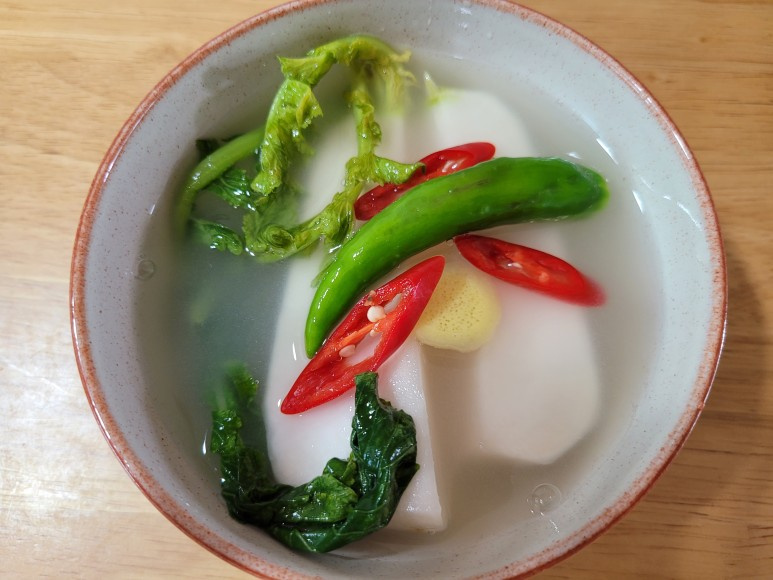
Making #Summer dongchimi, which is more tangy than cider
I am Dongchimi who learned from my mother. It's not a really salty dongchimi made in winter, but a healthy summer kimchi that makes it not salty enough to drink the soup in a boring and fragrant way. It's not salty at all and it's so delicious even if you put noodles in the soup. This is summer dongchimi that my in-laws praised.
4 serving
Within 999 minutes
구로동이모
- Ingredients
-
-
Radish2pack
-
Scallions1handful
-
Garlic5piece
-
Ginger1/2handful
-
Cheongyang red pepper5ea
-
Red pepper5ea
-
Bottled water4L
-
ship1ea
-
onion1ea
-
Garlic15piece
-
Ginger1handful
-
Water500ml
-
Salt4T
-
New Sugar1/2T
-
Water2L
-
Salt1.5cup
-
New Sugar1T
-
glutinous rice flour2T
-
Water1cup
-
- Cooking Steps
-
STEP 1/11First, trim the dongchimi.
The most important thing to pay attention to is the area where the radish and the leaves meet. Turn that part around and cut it out with a knife.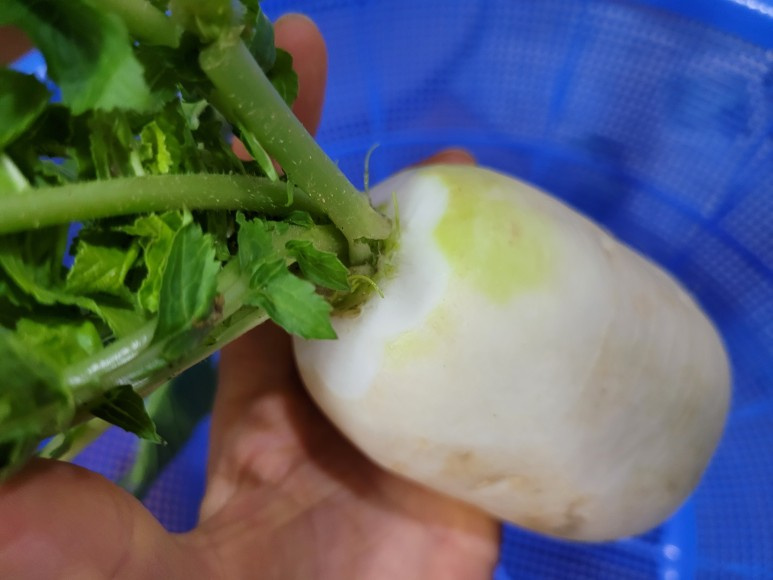 STEP 2/11Wash the trimmed radishes clean.
STEP 2/11Wash the trimmed radishes clean.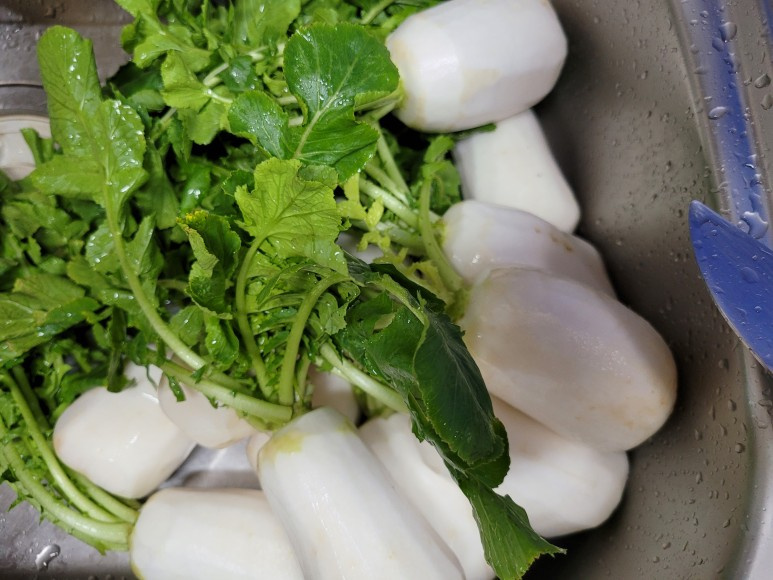 STEP 3/11Cut the radish into the shape you want and add 2L of water,
STEP 3/11Cut the radish into the shape you want and add 2L of water,
Add 1.5 cups of salt and 1T of new sugar and marinate for 2 years.
Turn it over once in an hour. STEP 4/11Prepare seasoning and glutinous rice paste while pickled radish.
STEP 4/11Prepare seasoning and glutinous rice paste while pickled radish.
Boil glutinous rice paste with 2T of powder and a cup of water.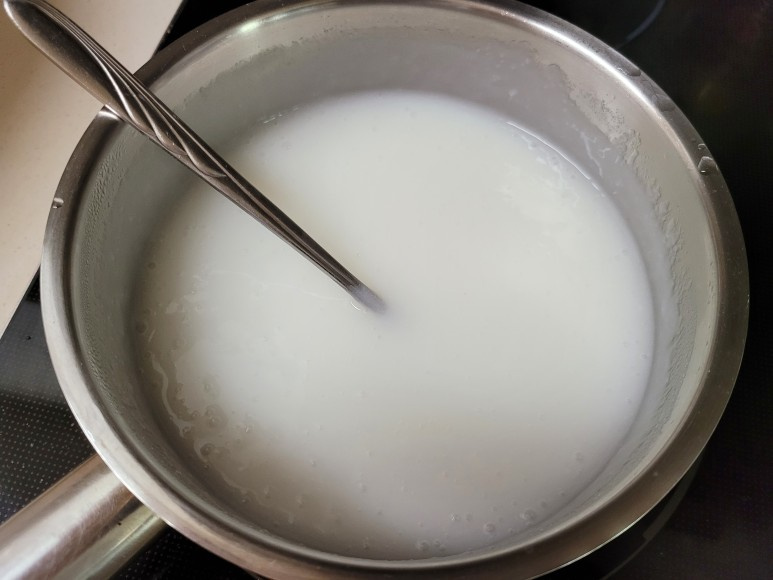 STEP 5/11Put the seasoning in a blender and grind.
STEP 5/11Put the seasoning in a blender and grind.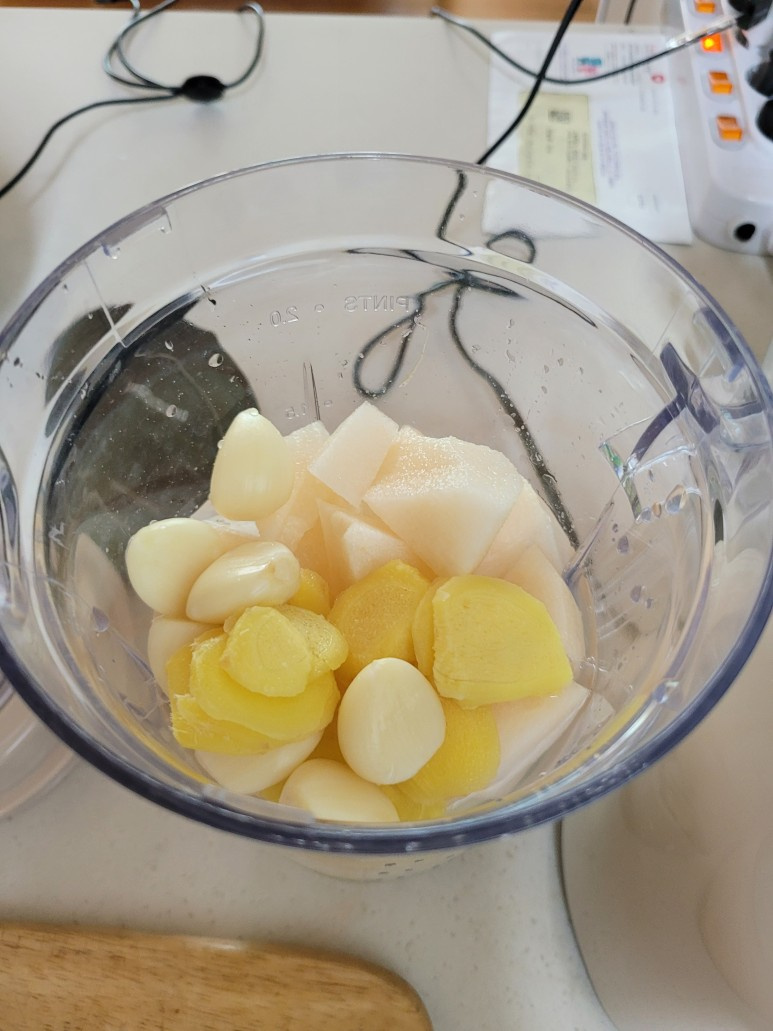 STEP 6/11Squeeze the soup by supporting the seasoning in a strainer. If you just put it in, the dongchimi soup becomes murky and it's not good to look at.
STEP 6/11Squeeze the soup by supporting the seasoning in a strainer. If you just put it in, the dongchimi soup becomes murky and it's not good to look at.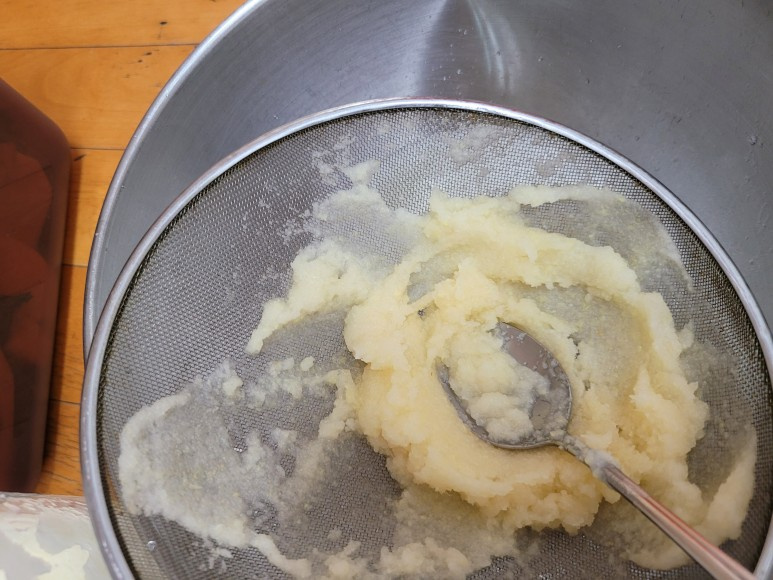 STEP 7/11The broth, which is the basis of kimchi soup, is prepared.
STEP 7/11The broth, which is the basis of kimchi soup, is prepared. STEP 8/11Now prepare ginger, garlic, and red pepper to garnish Dongchimi kimchi.
STEP 8/11Now prepare ginger, garlic, and red pepper to garnish Dongchimi kimchi.
Dip the peppers with a fork to make them taste spicy, and slice garlic and ginger. STEP 9/11Remove the pickled radish from the water and put it in the kimchi container.
STEP 9/11Remove the pickled radish from the water and put it in the kimchi container.
I washed it clean and pickled it, so I didn't wash it separately
I use it right away. STEP 10/11Put pickled radish and garnish in the kimchi container
STEP 10/11Put pickled radish and garnish in the kimchi container
Add 4 liters of water, seasoned broth, glutinous rice paste, 4T of thick salt and 1/2T of new sugar and stir well.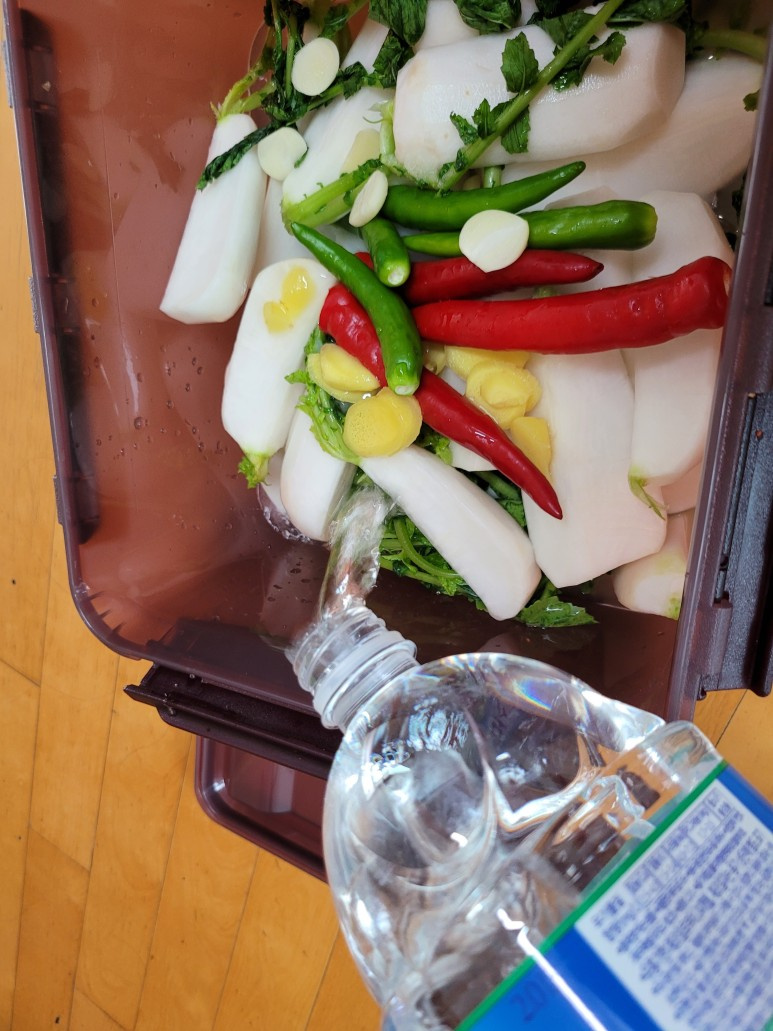 STEP 11/11I pressed the radish with green onions so that it doesn't float.
STEP 11/11I pressed the radish with green onions so that it doesn't float.
Chives are also available at this time.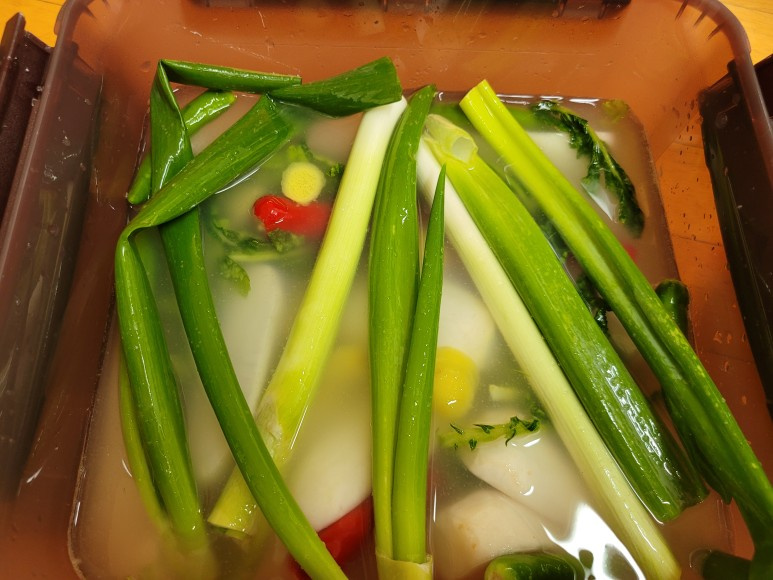 Don't soak it in salt when it's pickled. Make sure to soak it in salt water. If you like ripe kimchi, refrigerate it after half a day, and if you like raw kimchi, refrigerate it after an hour or two. When you eat, you can cut pears or apples and eat them together. Dongchimi soup is so clean and delicious even if you boil noodles and roll them.
Don't soak it in salt when it's pickled. Make sure to soak it in salt water. If you like ripe kimchi, refrigerate it after half a day, and if you like raw kimchi, refrigerate it after an hour or two. When you eat, you can cut pears or apples and eat them together. Dongchimi soup is so clean and delicious even if you boil noodles and roll them.
- Bulgogi Recommended recipe
-
-
1
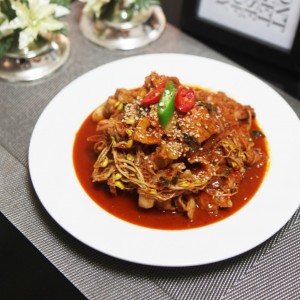 Chef Baek's bean sprout bulgogi4.82(105)
Chef Baek's bean sprout bulgogi4.82(105) -
2
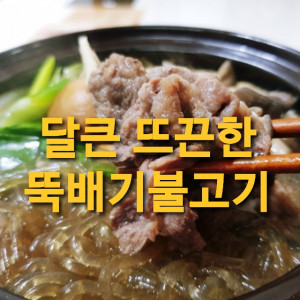 How to make Ttukbaegi Bulgogi :: Have a Ttukbaegi~4.96(24)
How to make Ttukbaegi Bulgogi :: Have a Ttukbaegi~4.96(24) -
3
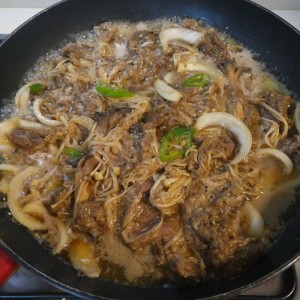 Beef Bulgogi Golden Seasoning Recipe4.94(1087)
Beef Bulgogi Golden Seasoning Recipe4.94(1087) -
4
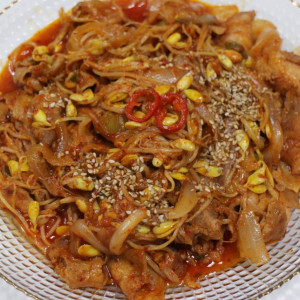 Simple and delicious meat side dishes - Making soybean fire (bea4.98(42)
Simple and delicious meat side dishes - Making soybean fire (bea4.98(42)
-
- Bibimbap Recommended recipe
-
-
1
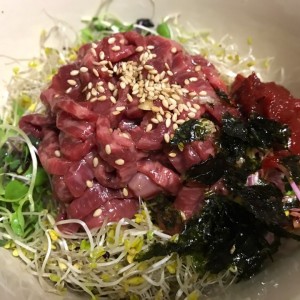 Sprout Raw Beef Sliced Raw Fish Bibimbap4.91(22)
Sprout Raw Beef Sliced Raw Fish Bibimbap4.91(22) -
2
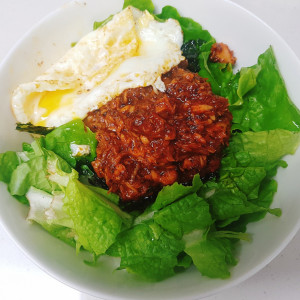 Tuna bibimbap4.99(288)
Tuna bibimbap4.99(288) -
3
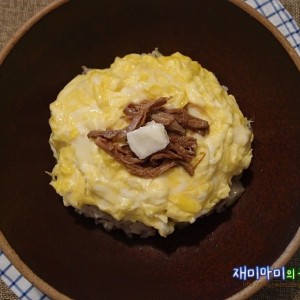 Jangjorim Butter Bibimbap: The rice we ate at School Food5.00(28)
Jangjorim Butter Bibimbap: The rice we ate at School Food5.00(28) -
4
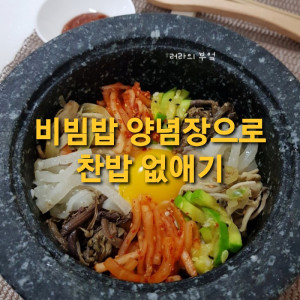 Make a hot pot bibimbap and bibimbap sauce to get rid of cold ri5.00(8)
Make a hot pot bibimbap and bibimbap sauce to get rid of cold ri5.00(8)
-